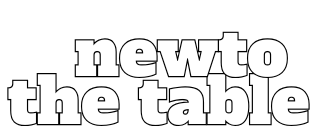In a world where energy bills can feel like a second mortgage, smart energy optimization is the superhero we never knew we needed. Imagine slashing those costs while saving the planet—all without donning a cape. It’s not just a dream; it’s a reality that’s knocking on your door, and it’s about time you invited it in for tea.
Table of Contents
ToggleUnderstanding Smart Energy Optimization
Smart energy optimization significantly reduces energy costs while improving sustainability. This approach combines technology and strategy to maximize energy efficiency in residential and commercial environments.
Definition and Importance
Smart energy optimization refers to the systematic use of technology and data to enhance energy use efficiency. It plays a vital role in reducing operational costs and minimizing carbon footprints. Implementing smart energy optimization effectively addresses rising energy prices while promoting environmental stewardship. Homeowners and businesses benefit through energy savings, ultimately enabling better resource management. Such practices contribute to energy security and sustainability, essential elements in today’s energy landscape.
Key Technologies Involved
Several key technologies drive smart energy optimization efforts. Smart meters provide real-time data on energy consumption patterns, enabling users to adjust their habits accordingly. Energy management systems analyze data and offer insights into inefficiencies. IoT devices communicate seamlessly, enhancing automation and control over energy use. Renewable energy sources, such as solar panels, integrate into optimization strategies, further reducing reliance on traditional energy grids. Together, these technologies promote informed decision-making and foster a more sustainable energy ecosystem.
Benefits of Smart Energy Optimization
Smart energy optimization provides multiple advantages, enhancing both financial savings and environmental health. Adopting this strategy becomes essential in today’s energy-conscious landscape.
Cost Savings
Cost savings represent a major benefit of smart energy optimization. Homeowners experience reduced energy bills through improved efficiency, which leads to lower consumption. Smart meters offer real-time data on energy usage, helping identify wasteful habits. Energy management systems automate controls to optimize energy use during peak and off-peak times. Additionally, integrating renewable energy sources reduces reliance on traditional utilities, further minimizing costs. The return on investment becomes evident as monthly expenditures decrease, allowing individuals and businesses to reallocate funds to other important areas.
Environmental Impact
Environmental impact stands out as another critical advantage. Smart energy optimization directly contributes to reduced carbon emissions through enhanced energy efficiency. Utilizing IoT devices helps monitor energy consumption and enables proactive adjustments, thus decreasing waste. Deploying renewable energy sources like solar panels further diminishes dependence on fossil fuels. Consequently, this leads to a decrease in pollutants released into the atmosphere. Communities benefit from cleaner air and healthier ecosystems, reflecting the broader positive implications of adopting smart energy solutions. Enhanced sustainability not only supports immediate surroundings but also fosters long-term ecological balance.
Applications of Smart Energy Optimization
Smart energy optimization finds applications across various sectors, particularly in residential and commercial environments. These technologies enhance efficiency, lower costs, and promote sustainability.
Residential Sector
Smart energy optimization transforms residential energy consumption. Energy management systems adjust home settings automatically, reducing waste based on real-time data. Smart meters empower homeowners to monitor patterns, enabling informed decisions. The integration of solar panels allows families to harness natural resources, reducing reliance on utility providers. Adoption of smart thermostats promotes more efficient heating and cooling, leading to significant savings on energy bills. Various home IoT devices work together to ensure every appliance operates at peak efficiency, maximizing energy use.
Commercial Sector
In the commercial sector, smart energy optimization gains traction for its ability to streamline operations. Businesses leverage energy management systems to automate lighting and HVAC settings, minimizing unnecessary consumption. Real-time energy tracking helps organizations identify spikes, guiding prompt adjustments. The utilization of renewable energy sources, such as solar power, allows companies to cut operational costs and meet sustainability goals. Enhanced energy efficiency contributes to improved employee productivity and reduced environmental impact. Many organizations report significant cost reductions after implementing smart optimization technologies, demonstrating its value across enterprises.
Challenges in Implementing Smart Energy Optimization
Implementing smart energy optimization faces several challenges that can hinder its success. Both technical and economic factors require attention.
Technical Barriers
Technical barriers present significant obstacles in the deployment of smart energy optimization solutions. Incompatibility between existing systems and advanced technologies creates integration issues. Limited access to reliable infrastructure, especially in rural areas, affects the implementation of smart devices. Moreover, data security concerns arise as more devices connect to the internet, making them vulnerable to cyber threats. Effective solutions must address these challenges to ensure smooth functionality within energy management systems.
Economic Considerations
Economic considerations play a crucial role in the adoption of smart energy optimization. High initial costs associated with purchasing and installing advanced technology can deter homeowners and businesses. Return on investment often requires time, leading to hesitance among potential adopters. Additionally, fluctuating energy prices may impact projected savings, complicating financial assessments. Recognizing these economic factors is essential for developing strategies that promote widespread implementation and acceptance of smart energy solutions.
Future Trends in Smart Energy Optimization
Emerging trends in smart energy optimization promise to reshape the energy landscape. Innovations in technology and policy are accelerating this evolution, positioning energy efficiency at the forefront of sustainability efforts.
Innovations on the Horizon
Smart grid technology is expected to enhance energy distribution. Advanced artificial intelligence systems can analyze consumption patterns and optimize energy allocation. Furthermore, improvements in battery storage technology facilitate the better integration of renewable energy sources, allowing for smoother energy transitions during peak demand. The rise of blockchain technology also introduces secure methods for energy transactions, promoting peer-to-peer energy sharing. These developments significantly reduce energy waste and empower consumers with more control.
Policy and Regulatory Changes
Changes in regulations will drive the adoption of smart energy solutions. Governments increasingly prioritize sustainability by implementing policies that support renewable energy projects. Incentives for energy efficiency measures encourage both individuals and businesses to invest in smart technologies. Additionally, updated standards for building energy performance can push industries toward greater accountability in emissions reductions. These shifts help create a favorable environment for smart energy optimization, ensuring it remains a growing focus in various sectors.
Smart energy optimization stands as a transformative force in today’s energy landscape. By leveraging technology and data, it empowers homeowners and businesses to reduce energy costs and enhance sustainability. The integration of smart meters, energy management systems, and renewable energy sources fosters informed decision-making, leading to significant financial savings and a reduced environmental footprint.
While challenges exist in implementation, ongoing advancements in technology and supportive policies promise a brighter future for smart energy solutions. As awareness and adoption grow, communities can expect not only lower energy bills but also a healthier planet. Embracing smart energy optimization isn’t just a smart choice; it’s a necessary step toward a sustainable future.








